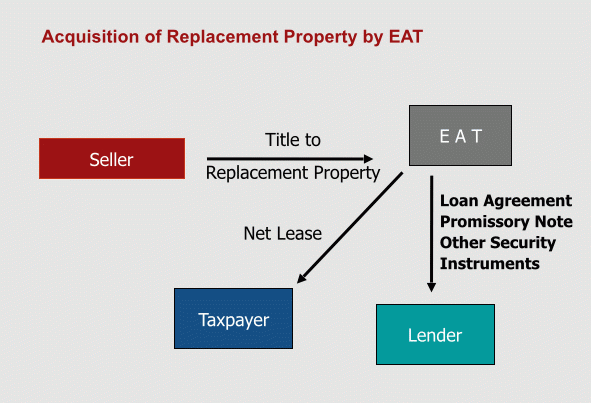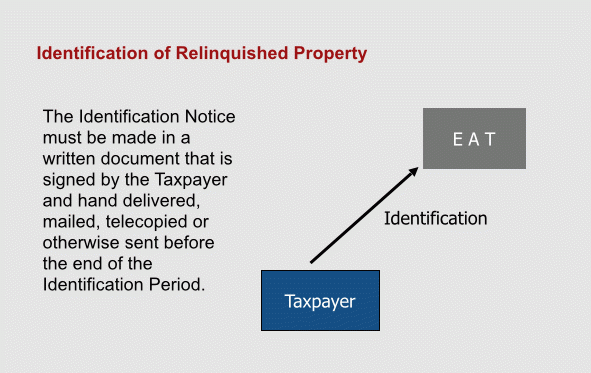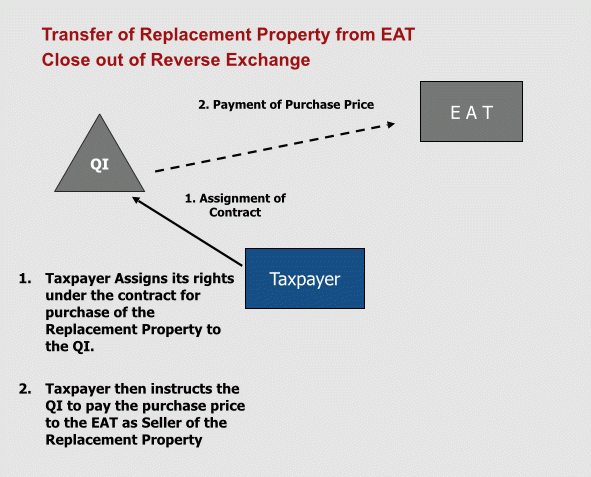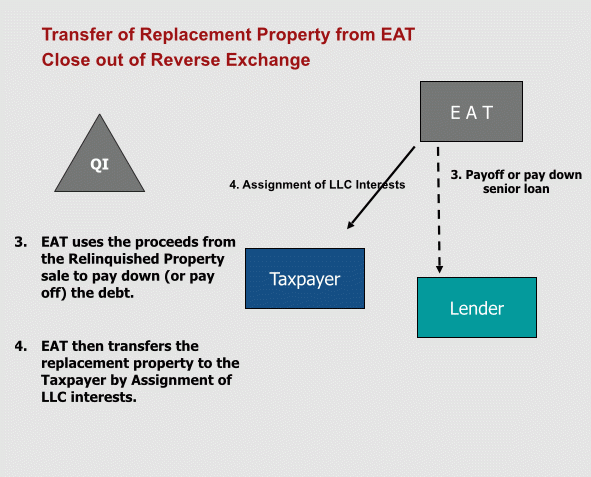Use this step-by-step guide to execute your Reverse Exchange with success.
1: Taxpayer determines that Replacement Property needs to be acquired prior to transferring Relinquished Property and desires to enter into a Replacement Property Parking Arrangement with an Exchange Accommodation Titleholder (EAT).
2: Typically at this time, Taxpayer has a signed Purchase Agreement to acquire replacement property. If not, Taxpayer adds language to the contract reserving its right to assign the contract to either a Qualified Intermediary (QI) or an EAT. If this cannot be done (for negotiation purposes), Taxpayer should at least provide Seller with a direction (at closing) to transfer the property to the EAT as its agent.
3: Taxpayer engages the EAT to acquire Replacement Property.
4: Taxpayer and EAT execute a Qualified Exchange Accommodation Agreement (QEAA). This agreement provides that the EAT will acquire “qualified indicia of ownership” in the Replacement Property for a period of up to 180 days and that Taxpayer intends that the property to be parked is Replacement Property, as defined in the 1031 Regulations.
5: Taxpayer and EAT execute a Net Lease between the Taxpayer (or Taxpayer’s affiliate) and the EAT at a rental rate of $1/year. The Lease transfers all operating responsibilities and all income from the property back to Taxpayer.
6: Taxpayer and EAT may also execute various loan documents prior to closing including a Non-recourse Promissory Note, Mortgage/Deed of Trust, Assignment of Leases and Rents, etc. In the event a third party lender is providing all or a portion of the funds to complete the purchase, the Taxpayer can guarantee or co-sign any loan documents the EAT is required to execute. If a third party lender is providing financing, the rent under the Net Lease is set to exactly offset the monthly debt service. If the Taxpayer adds equity to complete the purchase, this will be evidenced by a non-interest bearing, non-recourse Promissory Note. The terms of the Note will be such that the debt is extinguished when the EAT transfer the property to the Taxpayer.
7: At the closing of the Replacement Property, The EAT, through a single purpose entity, takes legal title to the property.

8: Within 45 days from the date the EAT acquires the Replacement Property, Taxpayer submits a formal Identification of Relinquished Property to the EAT. Taxpayer can identify:
A: up to 3 potential Relinquished Properties without regard to value, or...
B: any number of Relinquished Properties provided the combined FMVs of all of the identified properties doesn’t exceed 200% of the value of the parked Replacement Property

9: When Taxpayer has a signed contract to sell the Relinquished Property, Taxpayer assigns its rights, but not its obligations in the contract to the QI.
10: Written notice of the assignment is given to the third party Purchaser on or before the date of transfer. The Exchange Agreement and the Qualified Exchange Trust Agreement are executed at this time.
11: Relinquished Property is transferred to Purchaser, and sale proceeds are deposited into a Qualified Exchange Trust Account.

12: Taxpayer identifies the parked Replacement Property in a written Identification document signed by Taxpayer and delivered to the QI.
13: Taxpayer and EAT sign a Purchase and Sale Agreement for the transfer of the parked Replacement Property. The purchase price is set at the price at which the EAT acquired the property, plus improvements, if any.
14: Taxpayer assigns the Purchase and Sale Agreement to the QI in order to meet the requirement that the QI has “acquired and transferred” the property. Written notice of the Assignment is given to the EAT, as Seller.
15: Taxpayer then directs the QI to purchase the Replacement Property from the EAT. The funds in the Qualified Exchange Trust Account are used to:
A: Reimburse Taxpayer for funds advanced to complete the purchase; or...
B: Pay off or pay down the third party loan.
16: The Replacement Property is transferred by special warranty deed or by assignment of the membership interest in the SPE that owns the property. The transfer of the Replacement Property from the EAT to the Taxpayer must occur within 180 days from the date the EAT acquires “indicia of ownership” of the Replacement Property.

